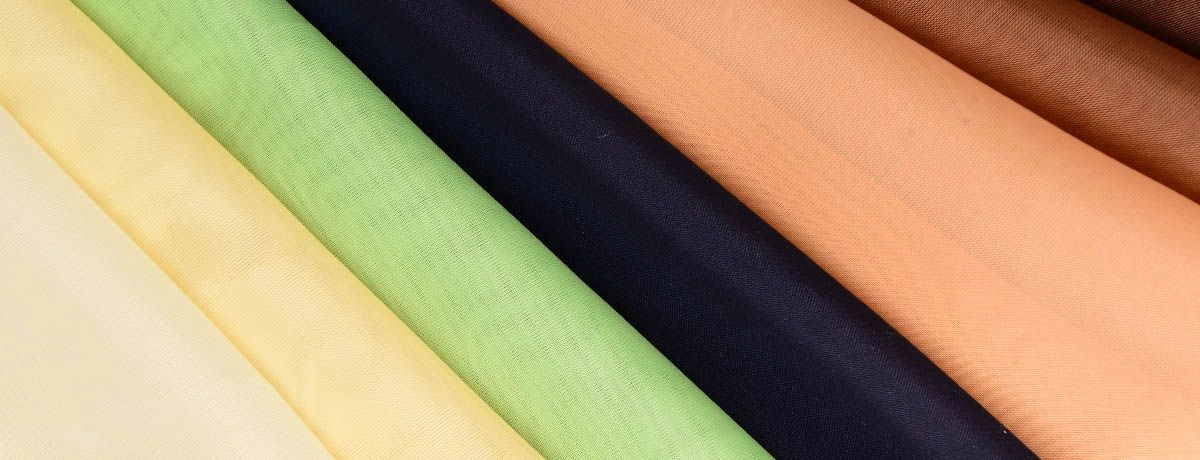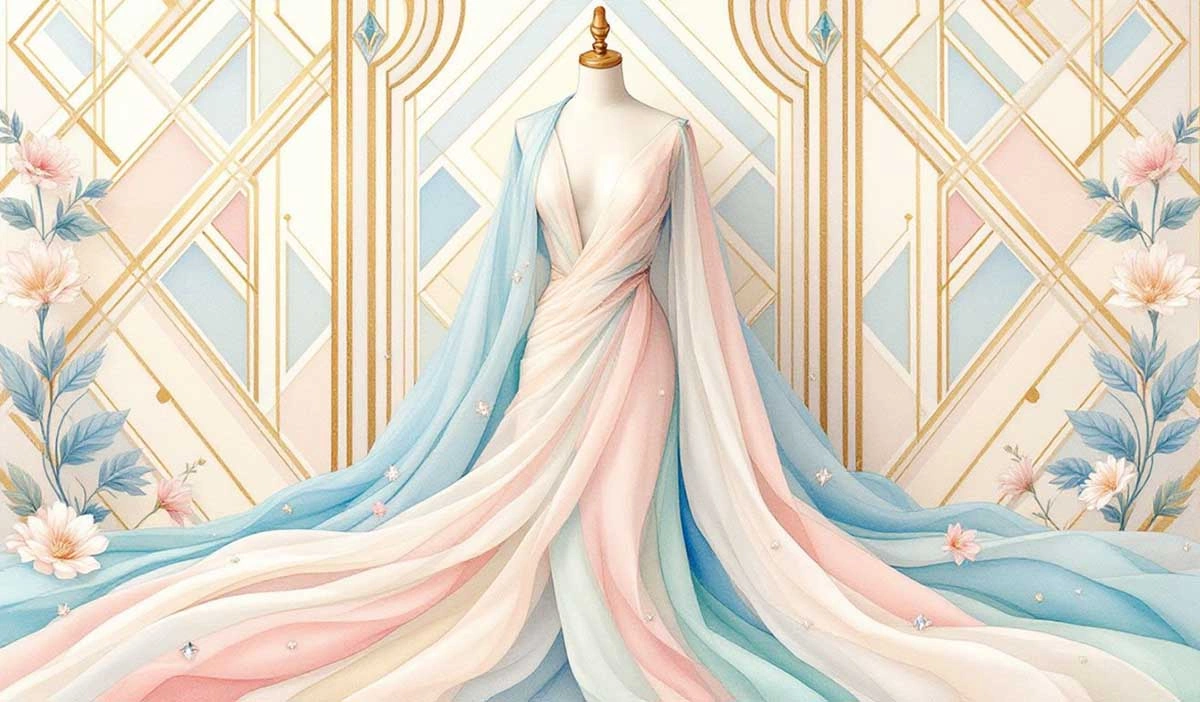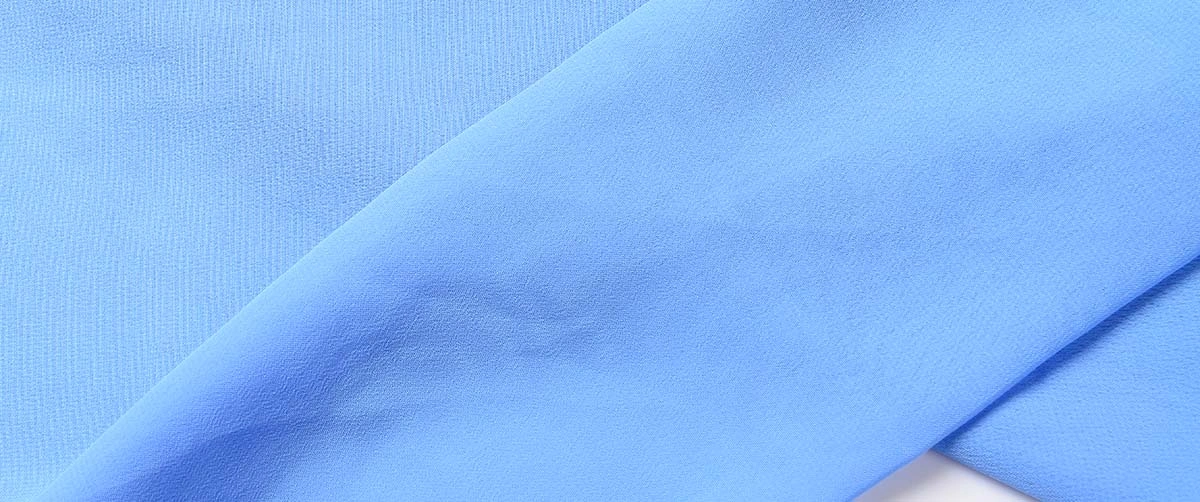Chiffon Fabric: Essential Tips and Uses You Need to Know

Chiffon is a lightweight, semi-transparent fabric widely used in fashion and home décor. Known for its delicate texture and elegant drape, chiffon can be made from materials such as silk, cotton, and polyester. This article will explore the key aspects of chiffon, including its history, varieties, and practical applications.
Key Takeaways
-
Chiffon fabric is versatile, made from various materials like silk, polyester, and rayon, suitable for both fashion and home decor.
-
The production of chiffon involves careful weaving techniques and raw material selection, significantly affecting the fabric’s texture, durability, and environmental impact.
-
Sustainable practices and certifications, such as GOTS for organic materials and GRS for recycled synthetic fabrics, play a crucial role in promoting eco-friendly chiffon production.
Understanding Chiffon Fabric

Chiffon fabric, known for its light and semi-translucent appearance, is woven in a simple weave. It can be crafted from:
-
silk
-
cotton
-
rayon
-
synthetic fibers like polyester and nylon
This variety in composition allows chiffon to meet various needs, from elegant bridal gowns to practical everyday wear.
Beyond fashion, chameleon chiffon fabric enhances home décor by adding elegance and letting natural light filter through shimmery, translucent curtains. Its use in both garments and home furnishings underscores its lasting appeal and versatility.
The History of Chiffon
Chiffon fabric has a storied past, originating in France around the 1700s. Initially made from silk, it was a fabric associated with luxury and was predominantly worn by the wealthy. The word ‘chiffon’ itself means ‘rag’ in French, highlighting its humble linguistic origins despite its luxurious connotations.
During the 19th century, chiffon gained significant popularity among the upper class in Europe and the United States. Its elegance and delicate texture made it a sought-after fabric for special occasions, cementing its status as a symbol of sophistication and refinement.
Key Characteristics of Chiffon Fabric
Characterized by its light, semi-transparent nature and gauze-like texture from high-twist yarns, chiffon resembles a fine mesh under magnification. This slightly rough texture and excellent air permeability make chiffon popular in both fashion and home décor.
Chiffon textile can be crafted from lightweight materials like silk, nylon, and polyester. Its plain weave technique and alternating S-twist and Z-twist yarns provide a distinctive, slightly puckered texture and elegant, floating appearance.
Types of Chiffon Fabrics

Chiffon fabrics offer several varieties, each with unique characteristics and uses. Here are some types of chiffon:
-
Luxurious silk chiffon
-
Practical polyester chiffon
-
Glossy rayon chiffon
-
Intricately patterned Jacquard chiffon
There’s a type for every need and preference.
Often seen as a luxurious fabric, chiffon has been historically favored by the affluent for special occasions. Its excellent draping ability and variable transparency make it ideal for fluid, graceful garment designs. This versatility also extends to home décor, where its sheer and slightly rough texture adds elegance and charm.
Silk Chiffon
Silk chiffon fabric is often considered the epitome of luxury. Made from natural raw silk fibers, it offers a soft texture with a slight sheen, ideal for high-end fashion applications like wedding dresses and elegant evening wear, including pearl chiffon fabric, silk crepe chiffon fabric, and silk satin chiffon fabric.
Its delicate yet lustrous appearance makes it an elegant and floating appearance popular choice for those seeking an air of sophistication and refinement.
Polyester Chiffon
Polyester chiffon is widely popular today due to its affordability and durability. Easy to maintain and wrinkle-resistant, it is ideal for everyday wear while still offering an elegant, floating appearance.
Rayon Chiffon
Rayon chiffon is valued for its glossy finish and beautiful draping capabilities. Its soft, glossy appearance contributes to a gentle drape, making it ideal for flowing garments like dresses and blouses.
Jacquard Chiffon
Jacquard chiffon fabric stands out due to its unique weaving technique that allows for intricate patterns to be woven into the fabric. These patterns enhance the visual appeal and textural richness of the fabric, making it a desirable choice for various applications.
How Chiffon Fabric is Made
Chiffon fabric can be made from various fibers, including:
-
silk
-
polyester
-
rayon
-
cotton
The choice of raw materials significantly impacts the texture and properties of the finished fabric, allowing for a wide range of uses from luxurious evening wear to practical everyday garments.
Chiffon production uses both natural and synthetic materials. Natural fibers like silk and cotton offer a soft, delicate texture, while synthetic options such as polyester and viscose provide durability and affordability. This diversity contributes to chiffon’s versatility and widespread appeal.
Weaving Techniques
Chiffon is created using a plain weave method, where yarns interlace in a single weft/warp design. This technique gives chiffon its lightweight and airy quality, making it suitable for elegant and flowing garments.
Chiffon yarns are tightly twisted using alternating S-twist and Z-twist crepe yarns, creating the fabric’s slightly puckered texture and distinctive appearance.
Natural vs. Synthetic Fibers
Silk chiffon production can involve eco-friendly practices like organic silk farming and sustainable dyeing methods, making it a more environmentally conscious choice. It is considered sustainable as it utilizes mulberry leaves without harmful chemicals.
Conversely, synthetic chiffon production often involves energy-intensive processes and chemicals, resulting in a larger carbon footprint.
Uses of Chiffon Fabric
Chiffon’s versatility makes it a favorite in both fashion and home décor. Its light, airy feel is ideal for clothing items like dresses, blouses, and lingerie. Additionally, chiffon is often chosen for special occasions like weddings due to its elegant drape and delicate texture.
Beyond clothing, chiffon is used in home décor to create a soft, ethereal atmosphere. Sheer curtains and decorative upholstery are common applications, adding refinement and tranquility to home interiors.
Evening Dresses and Gowns
Favored for evening wear, chiffon enhances the flow of dresses with its soft movement. Its delicate, lightweight qualities make it an excellent choice for bridal looks, especially for bridesmaids. Some chiffon fabrics feature embroidery, enhancing the overall aesthetic of evening dresses.
Layering chiffon fabrics to add opacity allows for versatile styling, making chiffon garments perfect for both summer and formal events.
Blouses and Lingerie
Chiffon’s sheer fabric nature provides a delicate, airy quality ideal for blouses. Its use in lingerie includes intimate apparel and hosiery, making it perfect for breathable blouses and delicate lingerie.
Scarves and Accessories
Chiffon accessories, such as scarves and ribbons, add elegance and color without being heavy. These lightweight accessories provide sophistication to any outfit, making them popular among fashion enthusiasts.
Home Décor
In home décor, chiffon is often used to create a soft and ethereal atmosphere. Common applications include sheer curtains that allow natural light while providing privacy, and decorative upholstery that enhances the elegance of furniture.
Overall, chiffon adds a touch of refinement and tranquility to home interiors.
Caring for Chiffon Fabric

Chiffon fabric requires careful handling due to its delicate fabric nature. Dry-cleaning or gentle hand washing is recommended. Always read the care label before washing chiffon garments to avoid damage.
Chiffon is prone to snagging and fraying, requiring careful handling during sewing. Its slippery nature can make cutting and construction difficult, necessitating fabric stabilization techniques.
Caring for chiffon can be challenging due to its tendency to wrinkle, rip, and difficulty in maintenance.
Washing Instructions
Chiffon must be washed with special care and cannot be machine washed like other clothes. Use mild detergents specifically for chiffon and soak for 30 minutes. Avoid bleach or fabric softeners, as they can damage the fabric.
Cold water is preferable for washing chiffon to prevent shrinkage and color fading. This gentle approach helps maintain the fabric’s quality and longevity.
Drying and Storing
Lay chiffon garments flat to dry, avoiding twisting or squeezing to prevent damage. Do not dry chiffon under direct sunlight as it can cause fading and damage. To remove wrinkles, steam the garment and let it air dry, or iron it depending on the fiber type.
Proper storage is crucial. Store chiffon garments in a cool, dry place away from direct sunlight to maintain their quality and appearance over time.
Environmental Impact of Chiffon

The production of synthetic chiffon from materials like polyester has a significant environmental cost due to its reliance on non-renewable resources and energy-intensive manufacturing processes. Especially polyester and nylon, synthetic chiffon production is linked to significant environmental damage due to petroleum extraction and processing.
These materials are non-biodegradable, contributing to long-lasting waste in landfills.
Sustainability of Silk Chiffon
Silk chiffon is produced with sustainable practices, making it eco-friendly. The environmental impact of silk chiffon is negligible, as its production releases no toxins.
Silk chiffon can be certified organic if manufactured under sustainable practices, promoting environmental preservation.
Impact of Synthetic Chiffon
Synthetic chiffon, typically made from polyester and nylon derived from petroleum, is non-biodegradable and contributes to landfill waste. The production of synthetic chiffon has a larger carbon footprint than silk chiffon, highlighting its environmental issues.
Chiffon Fabric Certifications
Fabric certifications ensure the quality and safety of textiles for consumers. Several certifications assess the quality and sustainability of chiffon fabrics, helping consumers make informed choices and promoting sustainable practices in the textile industry.
These certifications guarantee chiffon fabrics are free from harmful substances, contributing to consumer safety and environmental preservation.
Organic Certifications for Silk and Cotton
The Global Organic Textile Standard (GOTS) is an important certification for organic silk and cotton chiffons. Products certified by GOTS must contain at least 95% organic fibers to be labeled as ‘organic’. This certification requires strict adherence to environmental and social criteria throughout the production process, ensuring organic silk and cotton are produced sustainably.
GRS Certification for Synthetic Chiffon
The Global Recycle Standard (GRS) ensures synthetic chiffon is made from recycled materials. This certification promotes sustainable practices and helps reduce the environmental impact of synthetic chiffon production.
Summary
Chiffon fabric, with its rich history, versatile types, and elegant applications, remains a beloved choice in both fashion and home décor. From luxurious silk chiffon to practical polyester chiffon, and from delicate evening gowns to ethereal home décor, chiffon’s appeal is timeless. Its production methods, whether from natural or synthetic fibers, and the care it requires, highlight the fabric’s delicate nature and environmental considerations.
Understanding the certifications that ensure the quality and sustainability of chiffon fabrics empowers consumers to make informed choices. As we continue to appreciate the beauty and utility of chiffon, it is crucial to adopt and support sustainable practices in its production and care. Let the allure of chiffon inspire you to explore its many uses while being mindful of its environmental impact.
Frequently Asked Questions
What is chiffon fabric made from?
Chiffon fabric is made from a variety of fibers, including natural fibers such as silk and cotton, as well as semi-synthetic fibers like rayon and synthetic fibers like polyester and nylon. This versatility allows chiffon to be both lightweight and elegant.
What are the different types of chiffon fabrics?
Chiffon fabrics primarily include silk chiffon, polyester chiffon, rayon chiffon, and Jacquard chiffon, each offering distinct qualities for various applications. Understanding these types can aid in selecting the right fabric for your project.
How should I care for chiffon garments?
To properly care for chiffon garments, dry clean or hand wash them on a gentle cycle with mild detergents and cold water. Lay them flat to dry, avoiding direct sunlight, and refrain from using bleach or fabric softeners.
What are the environmental impacts of chiffon fabric?
Chiffon fabric can have considerable environmental impacts, particularly when made from polyester, which relies on non-renewable resources and energy-intensive production methods. In contrast, silk chiffon can be produced sustainably, posing a lower environmental risk.
What certifications should I look for when buying chiffon fabric?
When purchasing chiffon fabric, prioritize certifications such as the Global Organic Textile Standard (GOTS) for organic options and the Global Recycle Standard (GRS) for recycled synthetics. These certifications ensure quality and sustainability.
Resources Page
- Charmeuse Satin Shines in Fashion and Home
- Silk and Velvet Fabric by the Yard
- What is Charmeuse: All About Charmeuse Silk
- Sheer Chiffon and Georgette Fabric by the Yard
- Timeless Chiffon Print: Floral Fabric
- Chiffon Fabric White: Bolts Unwrapped for the Textile Entrepreneur
- Purple Chiffon: Waterfall Two Tone Fabric
- Black Chiffon Material By The Yard
- Ivory Chiffon Fabric by the Yard for Textile Experts
- Why Everyone Loves Red Chiffon Fabric
- Chiffon Like Fabric: Where Luxury Meets Texture in Textiles
- Embroidery Chiffon Fabric: Floral Pattern Silk Chiffon
- Chiffon Roll Fabric: The Beauty and Versatility
- Navy Blue Chiffon Fabric – Alluring and Versatile
- Gray Chiffon Fabric: The Fabric That Says Elegance and Longevity for Your Creations
- Silk vs Chiffon Fabric: What’s the Difference
- Chiffon Vs Taffeta: What’s the Difference?
- Chiffon and Charmeuse Fabrics: Versatility, Appeal and Market Insights
